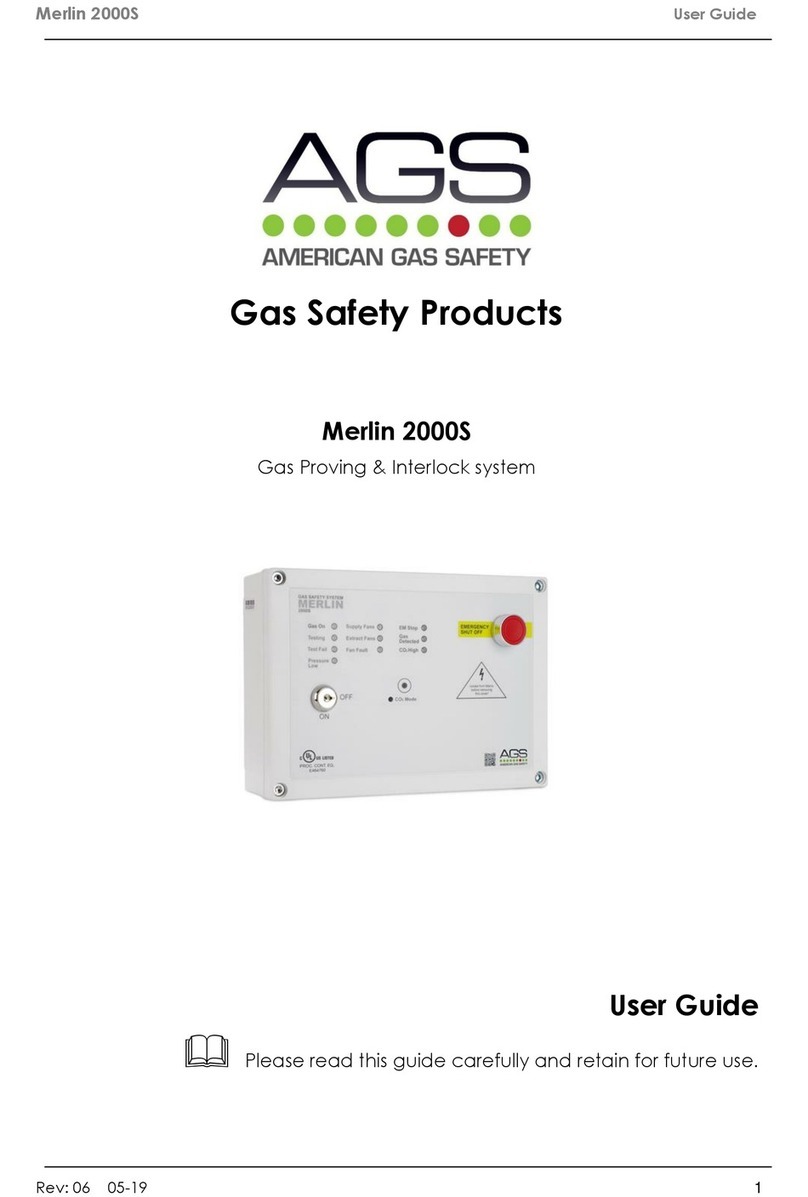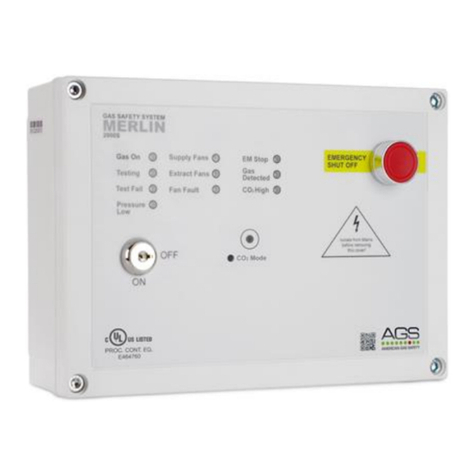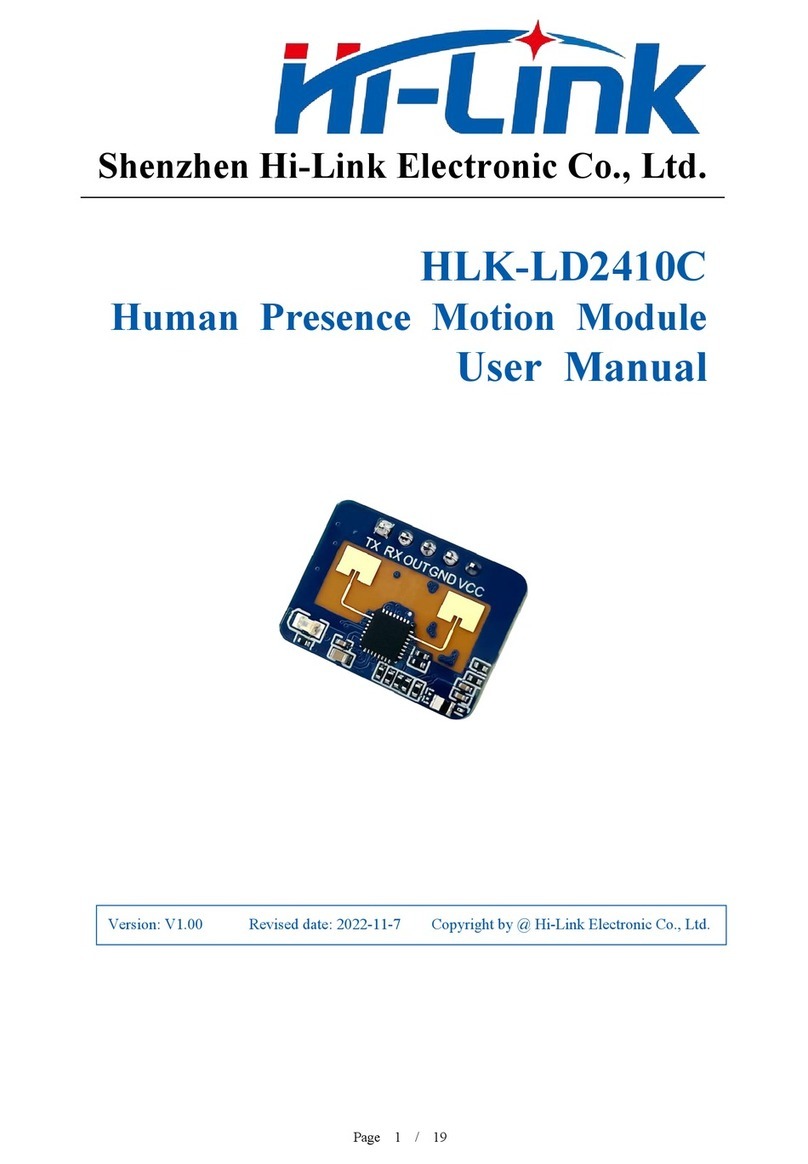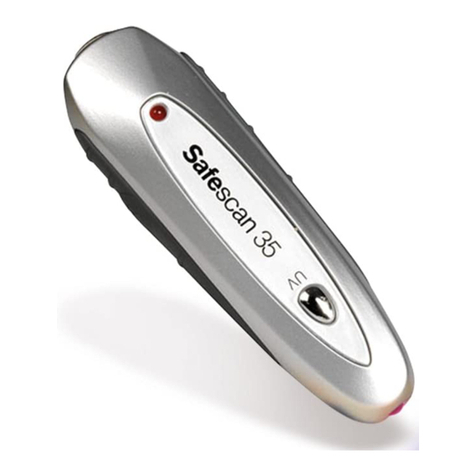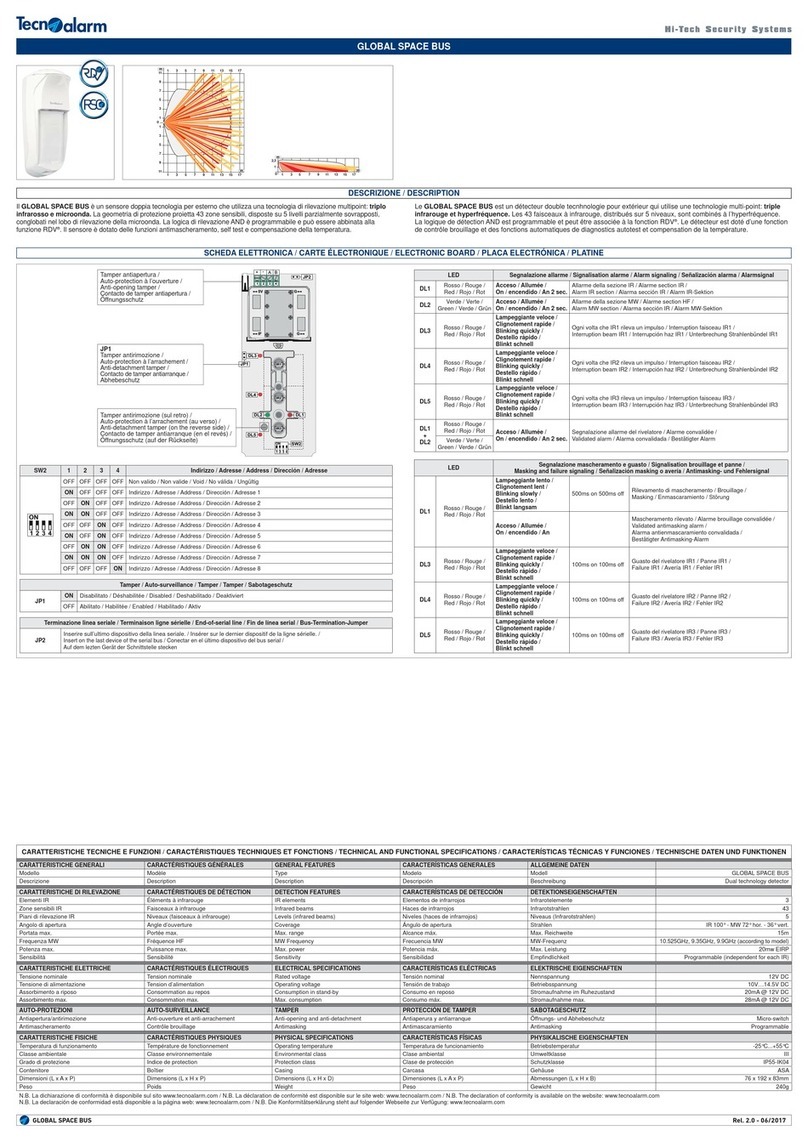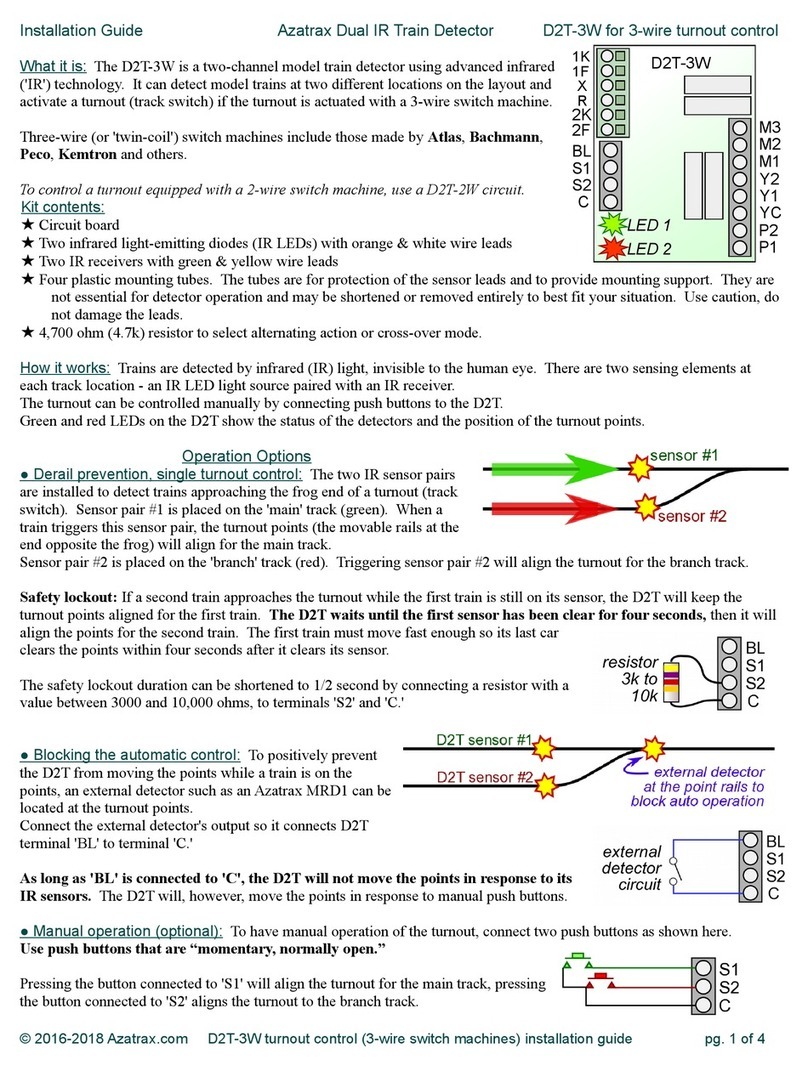AGS Mini Merlin CH4CO User manual

Installation & Operation Manual AGS Mini Merlin CH4CO
Rev: 12 01-20 1
MINI MERLIN CH4CO
Dual Gas Detector
Methane & Carbon Monoxide Gas
Installation & Operation Manual
Please read this manual carefully and retain for future use.
Your new Mini Merlin is a dual gas sensor carefully designed and tested to monitor levels of Methane
(CH4) and Carbon Monoxide (CO) in the air. If there is a dangerous build-up of gas or unsafe levels of
carbon monoxide at the sensor, this device can shut off the gas supply via a gas safety valve and/or a
gas fired appliance.
This device has additional features for resetting systems, as well as audible and visual alarms - It can also
be integrated with a Building Management System (BMS).

Installation & Operation Manual AGS Mini Merlin CH4CO
Rev: 12 01-20 2
Table of Content
CARBON MONOXIDE GAS.........................................................................3
General Information ..................................................................................................... 3
METHANE GAS...........................................................................................4
General Information ..................................................................................................... 4
INSTALLATION ...........................................................................................5
Planning........................................................................................................................... 5
Typical Location and Positioning................................................................................ 5
Fixing ................................................................................................................................ 6
Board Overview ............................................................................................................. 7
Building Management System Integration............................................................... 7
Wiring the Device .......................................................................................................... 8
Audible Alarm Switch ................................................................................................. 11
Auto Reset Switch........................................................................................................ 11
Factory Set Condition................................................................................................. 11
Trouble Shooting .......................................................................................................... 11
Specification ................................................................................................................ 11
OPERATION ..............................................................................................12
First Power Up ............................................................................................................... 12
Gas Level Display ........................................................................................................ 12
Audible Alarm Characteristics .................................................................................. 12
Touch Button ................................................................................................................ 13
Remote Shut Off .......................................................................................................... 13
End of Life Indicator .................................................................................................... 13
Maintenance ............................................................................................................... 13
Bump Testing ................................................................................................................ 14
IMPORTANT WARNING STATEMENTS...................................................15
Manufacturer’s Warranty........................................................................................... 15

Installation & Operation Manual AGS Mini Merlin CH4CO
Rev: 12 01-20 3
CARBON MONOXIDE GAS
General Information
Carbon monoxide (CO) is a poisonous, colourless, odourless, and tasteless gas. Although it has
no detectable odor, CO is often mixed with other gases that do have an odor. So, you can
inhale carbon monoxide right along with gases that you can smell and not be aware that CO
is present.
SYMPTOMS OF CARBON MONOXIDE GAS POISONING
The following symptoms are related to CO poisoning and should be discussed with ALL
members of the household, facility or person/s frequenting monitored areas.
Mild Exposure:
Slight headache, nausea, vomiting, fatigue, flu-like symptoms.
Medium Exposure:
Severe headache, drowsiness, confusion, increased heart rate.
Extreme Exposure:
Unconsciousness, convulsions, cardio-respiratory failure, death.
If you experience even mild symptoms of CO exposure –consult a doctor/ physician
immediately.
CARBON MONOXIDE GAS LEVELS –PARTS PER MILLION
This device is equipped with a digital display that shows levels of CO (displayed in PPM: parts
per million).
Dangerous levels:
Generally above 100ppm. This should be treated as an urgent situation.
Medium levels:
Generally between 50ppm to 100ppm. This should be cause for concern and should not be
ignored or dismissed.
Low levels:
Maximum acceptable indoor level of CO is <9ppm.
Anything above this level may cause possible health effects with long-term exposure.
See the specification table (5) for how your device monitors CO.
POSSIBLE SOURCES OF CARBON MONOXIDE GAS
Inside your home or facility, gas appliances used for heating, water heating and cooking are
the most likely sources of CO. Vehicles running in attached garages can also produce
dangerous levels of CO.
CO can be produced when burning any fossil fuel, such as gasoline, propane, natural gas, oil
and wood. It can be produced in any fuel burning appliance that is malfunctioning, improperly
installed or insufficiently ventilated.
Automobiles, gas stoves, water heaters, portable fuel burning heaters, fireplaces.
Blocked chimneys or flues, corroded or disconnected vent pipes.
Vehicles and other combustion engines running in open or confined spaces.
Burning charcoal or fuel in grills in an enclosed area or near the home.
For more information, please visit our website or contact your local AGS distributor.

Installation & Operation Manual AGS Mini Merlin CH4CO
Rev: 12 01-20 4
METHANE GAS
General Information
Methane gas comes from the earth and it comes from our bodies. Methane is non-toxic and it
can be harnessed as an energy source. However, methane is highly explosive and it can cause
death by asphyxiation. It is important to understand how to deal with the hazards associated
with methane.
Although methane on its own isn't poisonous, it has the potential to become poisonous when
mixed with other substances. That potential exists when natural gas (CH4), which is 97%
methane, is burned in houses, offices and businesses. The burning of natural gas without proper
ventilation can produce carbon monoxide, a deadly gas that is difficult to detect.
SYMPTOMS OF METHANE GAS EXPOSURE
Methane gas is relatively non-toxic and associated with being a simple asphyxiator displacing
oxygen in the lungs. However Methane is extremely combustible.
Exposure to high levels of Methane can cause:
Suffocation
Loss of consciousness
Headache and dizziness
Nausea and vomiting
Weakness
Loss of co-ordination
Increased breathing rate
METHANE GAS LEVELS - %
The LEL (Lower Explosive Limit) of methane is considered to be 5% BV (by volume of air).
So we call 5% BV (by volume) the same as 100% of the LEL (Lower Explosion Limit).
Your device is equipped with a digital display that shows the level of natural gas in the area
referred to as LEL% (a percentage of the LEL) and will alarm based on the following principle of
gas detection.
In simplified terms, a level of 8% LEL or less on your device is generally considered safe and
acceptable.
For more information, please visit our website or contact your local AGS distributor.

Installation & Operation Manual AGS Mini Merlin CH4CO
Rev: 12 01-20 5
INSTALLATION
Planning
Our monitors should be installed in areas at risk of gas leaks e.g. over boilers, valves or meters.
Take in to account the design of the air flow patterns within the zone area.
Detectors should be installed in the correct orientation, as recommended by the
manufacturer, and ease of access should be accounted for to allow for any bump tests,
recalibration and other forms of maintenance.
Areas to avoid
Avoid conditions of any other environmental factors that could potentially impede the
accuracy and operation of the detector such as; condensation; vibration; temperature,
pressure, the presence of other gases, electromagnetic interference and draft zones.
Area of coverage
Consider the coverage required and function of the area. Emphasis should be placed on
airflow patterns and correct placement, not perceived detecting ranges. The target gas will
only be identified when contact is made with the sensing element itself.
Typical Location and Positioning
Locations for detectors will vary based on the intended application, they should be located
near identified sources of a potential gas leaks/ pockets where hazardous gas could quickly
accumulate and areas of identified consequential risk.
a) (6ft) from sources of combustion i.e. boilers/heaters and gas fired cooking appliances etc.
b) (4ft) from draft zones and ventilation areas i.e. windows, doorways and A/C units etc.
c) (5ft) from ground level.
Recommended heights may vary based on air flow and temperature conditions in addition to
the proposed application and location. The device should be mounted near the boiler or gas
fired appliance/s such as domestic & commercial boiler rooms and basements.
When choosing your location, make sure you are able to hear the alarm from all areas.
Multiple detectors may be required to adequately protect property and persons.

Installation & Operation Manual AGS Mini Merlin CH4CO
Rev: 12 01-20 6
Fixing
Unpack all the parts!
This device is designed for surface mounting using 2 mounting screws (not supplied) and must
be installed by a licensed, insured contractor.
1. Carefully remove the rear cover from the unit.
2. Using the rear cover - mark the screw holes to the wall.
Ensure the wall surface is flat to prevent base distortion.
3. There are two pre-fractured areas for cable entry and a divider to separate low and
high voltage connections.
4. Placing at eye level allows for optimum monitoring of the digital display screen, or as
guide, 5 feet (1.5 meters) from ground level.
5. After executing the mounting and connections –secure the rear cover.
Do not attempt to remove the Circuit Board! This will void any warranty.
Be careful when creating access for cables –Damage to boards will void any warranty.

Installation & Operation Manual AGS Mini Merlin CH4CO
Rev: 12 01-20 7
Board Overview
1. POWER/LINE IN
Mains power input. 110-120v AC
2. VALVE OUT
Gas valve power output. 110-120v AC
3. AUTO RESET & BUZZER SWITCH
4. CO BMS
Relay will switch when CO gas reaches the alarm
level.
5. NG/ LPG BMS
Relay will switch when CH4 gas reaches the alarm
level.
6. REMOTE SHUT OFF
Closed out as a factory setting and during normal
operation, this input shuts off the gas valve relay in
the event of external detectors being triggered.
Auto Reset and Buzzer Switch options
Auto Reset
Buzzer
OFF
When the power is restored after a power loss, the
unit must be restarted manually
The audible alarm will not sound at any
level but the digital display gas level
indicators will remain active.
ON
This will instruct the unit to restart automatically
when power is restored.
The alarm will sound every 15 seconds
during pre-alarm gas levels and
continuously when gas levels are high.
Building Management System Integration
This device can be integrated with a Building Management System (BMS), a home alarm
system, or be used as part of a boiler low voltage safety limit to make or break a circuit on both
gases separately, (valve open or valve closed) depending on the system.
These switches can be used for a variety of purposes including triggering alarm contacts,
operating and external relay for multiple appliance shut-down and generating status signals for
a BMS system.

Installation & Operation Manual AGS Mini Merlin CH4CO
Rev: 12 01-20 8
Wiring the Device
Gas Supply Controlled by 100-120VAC Solenoid Valve
A 110-120VAC gas solenoid valve should be powered using the
terminals marked [VALVE OUT].
When the GAS VALVE terminal is wired to a normally closed (NC) gas
solenoid valve, the device can be used to isolate gas supply for
multiple appliances.
If you use a gas solenoid valve, please note that standing pilots will
need to be re-lit.
CAUTION: We do not recommend installing a gas solenoid valve with standing pilots.
Gas Supply Controlled by 24VAC Solenoid Valve
When the GAS VALVE terminal is wired to a normally closed (NC)
gas solenoid valve, the device can be used to isolate gas supply
for multiple appliances.
The diagram shown opposite uses an external transformer (not
supplied) to close a 24vAC gas solenoid valve that could supply
gas to one or more appliances.
If you use a gas solenoid valve, please note that standing pilots will
need to be re-lit.
CAUTION: We do not recommend installing a gas solenoid valve with standing pilots.
Appliance Limit Circuit
The device can be used to directly shut down a gas appliance when a
fault condition is detected (gas leak), by wiring the normally
closed (NC) and common (COM) terminals
of the low volt BMS switches into the low
voltage safety limit circuit of the appliance.
If gas is detected, the limit circuit is opened, disabling the appliance.

Installation & Operation Manual AGS Mini Merlin CH4CO
Rev: 12 01-20 9
Appliance Limit Circuit
To connect both CO and NG to the safety limit circuit
of an appliance - wire in series as per the following
diagram.
Multiple Appliance Limit Circuit
The device can be used directly to disable multiple gas
appliances when a fault condition is detected (gas leak) by
wiring a multi-pole relay to the GAS VALVE LINE terminal.
Low voltage wiring is to be inserted into the external limit circuit of a gas appliance.
Honeywell Relay has a 120vAC primary coil with two sets of switches, each with Normally Open
(NO) and Normally Closed (NC) contacts.
These contacts are rated for up to 12A AFL. They can be used to break either a low or line volt
limit circuits or completely remove power to an appliance.

Installation & Operation Manual AGS Mini Merlin CH4CO
Rev: 12 01-20 10
Pilot Water Heater and Boiler Limit Breaker
The device can be used to directly shut the pilot of a water heater using a product from Field
Controls. The BMS terminals may also be used to connect to a home alarm system.
Remote Shut Off
Your device has a facility for remote devices to be connected.
The [Remote Shut Off] terminal is NC (Normally Closed) and will alarm when energised Open.
Remote devices cut off the gas supply when
activated.
To reset the device after a remote shut off
has been activated –press the Touch
Button.

Installation & Operation Manual AGS Mini Merlin CH4CO
Rev: 12 01-20 11
Audible Alarm Switch
The user can choose whether to have an audible alarm when dangerous gas levels are
detected. The alarm will continuously sound –there are no provisions to silence the alarm, gas
levels must drop to a safe level for the alarm to stop.
The buzzer measures approx. 65dB from a distance of 300mm/1ft (tested in quiet conditions).
See section ‘Board Overview’.
Auto Reset Switch
When the power is restored after a power loss, your device can either restart automatically or
manually. See section ‘Board Overview’.
Factory Set Condition
Buzzer / Audible Alarm
ON
Auto Reset
OFF
Trouble Shooting
Fault.
Possible Cause/Correction.
Device not responding.
oIncorrect wiring. Check Power/ Line In terminal.
End of Life message on screen
oDetector requires replacement –contact supplier,
Specification
Product:
AGS Mini Merlin –CH4CO
Visual Indicators
Traffic Colour Gas Status / End of Life / Remote Shut Off
Display
1.8” TFT – Thin Film Transistor
Screen Brightness
Non- adjustable
Initial Stabilisation Time
60 Seconds approx.
Power Input Voltage
100-120V AC
Consumption
90mA Max (24V)
Accuracy @ 25°C / 77°F
± 5%
Operating Temp
32 –104°F 0-95%RH Non-Condensing
Test Conditions
77° ± 41°F
Gas Sensor Type
Methane: Semi-conducting
Carbon Monoxide: Electromechanical
Gas Sensor Measuring Range
Methane: 500-10,000ppm
Carbon Monoxide: 0-1000ppm
Gas Value Pre-Alarm
Methane: >8% LEL
Carbon Monoxide: 20ppm
Gas Value Alarm
Methane: >10% LEL
Carbon Monoxide:
20ppm after two (2) hours
50ppm after one (1) hour
100ppm after ten (10) minutes
300ppm after one (1) minute
Volt Free BMS relay output
0.5A switching current (resistive load)
Dimensions (Inch)
3.7(W) x 5.5(H) x 2.4 (D)
Weight
8.54oz Approx.

Installation & Operation Manual AGS Mini Merlin CH4CO
Rev: 12 01-20 12
OPERATION
First Power Up
Supply mains electrical supply and press and hold the touch button for 3 seconds.
The device enters ‘sensor stabilisation’ phase for approximately 60 seconds – during this period
the screen will display an ‘initialisation’ message indicating that the device is not yet ready for
gas detection.
To switch your device off - remove or switch off the mains power supply.
Gas Level Display
Audible Alarm Characteristics
NO ALARM –Gas concentration levels are safe. No alarm sound.
PRE- ALARM –Alarm will ‘beep’ every 15 seconds.
ALARM –Continuous alarm sound.
The alarm will only sound if the Buzzer is switched to ON.
At dangerous gas levels, the alarm will continuously sound if the buzzer dip-switch is ON.
There are no provisions to silence this alarm.
Only when gas levels are at a safe level will the audible alarm stop.

Installation & Operation Manual AGS Mini Merlin CH4CO
Rev: 12 01-20 13
Touch Button
POWER UP
Press and hold for 3 seconds when electrical supply is connected.
RESET
To reset after a gas alarm - press the touch button once.
TEST
Press and hold for 3 seconds when powered to test screen colouration, audible alarm and
gas/BMS relay.
Remote Shut Off
If this device is connected to remote shut off devices (optional).
When activated, the digital display will indicate that it/they are activated
and will shut off the gas supply if installed and configured to do so.
End of Life Indicator
This message indicates that the detector has reached its expected operational lifecycle.
No gas levels will be displayed. Contact your supplier and replace the unit immediately.
Maintenance
Keep your detector in good working order follow these basic principles;
DO carefully remove any accumulated dust from the outer enclosure once a month.
NEVER use detergents or solvents to clean your device –this may permenantly or
temporarily damage the gas sensing elements.
NEVER spray air fresheners, hair spray, paint or other aerosols near the device.
NEVER paint the device. Paint will seal vents and interfere with the device.
High concentrations of alcohol found in many products may damage, deteriorate or affect
the gas sensing elements –such as; wine; deodorants; stain removers; thinners etc.
Other gases and substances to avoid; Corrosives (i.e. chlorine & hydrogen chloride); Alkali
metals; Basic or acidic compounds; Silicones; Tetraethyl lead; Halogens and halogenated
compounds.
The expected lifecycle may vary depending on environmental conditions.

Installation & Operation Manual AGS Mini Merlin CH4CO
Rev: 12 01-20 14
Bump Testing
What is bump testing?
‘Bump testing’ is a term used for checking a gas detector is functioning correctly by exposing it
to the target gas. A known concentration of the target gas is applied to the sensor to trigger an
alarm condition and ascertain the detector is working safely.
Why is it important?
A detector may visually appear in good order, but its sensitivity can be inhibited by external
factors. Dust, humidity, temperature fluctuations, cleaning products, contaminants or sensor
drift (ageing) can cause a decline in sensitivity and eventual failure. Regular ‘bump tests’ are
important to make sure the detector is able to detect a release of gas as early as possible.
How often?
A ‘bump test’ takes seconds and is often completed alongside a scheduled fire alarm test. We
recommend this is done at least weekly to reduce the risk of a detector not performing,
however the frequency should be determined from a risk assessment by the end user.
Please remember, ‘bump testing’ does not remove the need to have gas detectors inspected,
calibrated and serviced periodically by a trained engineer.
For more help and advice on bump testing, calibration and service –contact us.

Installation & Operation Manual AGS Mini Merlin CH4CO
Rev: 12 01-20 15
IMPORTANT WARNING STATEMENTS
The information contained within this manual should be referenced for typical installation and operation only.
For site specific requirements that may deviate from the information in this guide –contact your supplier.
The expected lifetime of gas sensor elements is 5 years upon initial power up. The device will display a message to
indicate this time and should immediately be replaced.
It is recommended that this device be commissioned upon installation and serviced annually.
Do not apply lighter gas or other aerosols to the device –this will cause extreme damage.
High concentrations of alcohol/ ethanol found in many products may damage, deteriorate or affect the gas sensing
elements –Avoid exposure near your device.
This device is designed to detect carbon monoxide and natural gas from any source of combustion.
It is NOT designed to detect smoke, fire or other gases and should NOT be used as such.
This device provides early warning of the presence of methane or carbon monoxide, usually before a healthy adult
would experience symptoms. This early warning is possible provided your alarm is located, installed and maintained as
described in this guide.
This device requires a continual supply of electrical power –it will not work without power.
This device should not be used to substitute proper installation, use and/or maintenance of fuel burning appliances
including appropriate ventilation and exhaust systems.
This device does not prevent methane or carbon monoxide from occurring or accumulating.
Actuation of your alarm indicates the presence of dangerous levels of Methane or CO.
Seek fresh air supply and contact your local gas emergency service should you suspect a gas leak.
This unit may not fully safeguard individuals with specific medical conditions.
If in doubt, consult a doctor/physician.
Your product should reach you in perfect condition, if you suspect it is damaged, contact your supplier.
Manufacturer’s Warranty
Two Year Warranty
Coverage: The manufacturer warrants to the original consumer purchaser, that this product will be free of defects in material and
workmanship for a period of three (3) years from date of purchase or one (1) years for oxygen detectors.
The manufacturer’s liability hereunder is limited to replacement of the product with repaired product at the discretion of the
manufacture. This warranty is void if the product has been damaged by accident, unreasonable use, neglect, tampering or other
causes not arising from defects in material or workmanship.
This warranty extends to the original consumer purchaser of the product only.
Disclaimers: Any implied warranties arising out of this sale, including but not limited to the implied warranties of description, merchantability
and intended operational purpose, are limited in duration to the above warranty period. In no event shall the manufacturer be liable for
loss of use of this product or for any indirect, special, incidental or consequential damages, or costs, or expenses incurred by the consumer
or any other user of this product, whether due to a breach of contract, negligence, strict liability in tort or otherwise. The manufacturer
shall have no liability for any personal injury, property damage or any special, incidental, contingent or consequential damage of any
kind resulting from gas leakage, fire or explosion. This warranty does not affect your statutory rights.
Performance: During the above warranty period, your product will be replaced with a comparable product if the defective product is
returned together with proof of purchase date. The replacement product will be in warranty for the remainder of the original warranty
period or for six months –whichever is the greatest.
Information on waste disposal for consumers of electrical & electronic equipment. (EEE)
When this product has reached the end of its life it must be treated as Waste Electrical & Electronics Equipment (WEEE).
Any WEEE marked products must not be mixed with general household waste, but kept separate for the treatment,
recovery and recycling of the materials used.
Please contact your supplier or local authority for details of recycling schemes in your area.

Installation & Operation Manual AGS Mini Merlin CH4CO
Rev: 12 01-20 16
For all correspondence regarding your device:
AGS Head Office
Tel: (727) 608-4375
Fax: (727) 538-4237
info@americangassafety.com
American Gas Safety is the owner of this document and reserves all rights of modification without prior notice.
Other manuals for Mini Merlin CH4CO
1
Table of contents
Other AGS Security Sensor manuals
Popular Security Sensor manuals by other brands
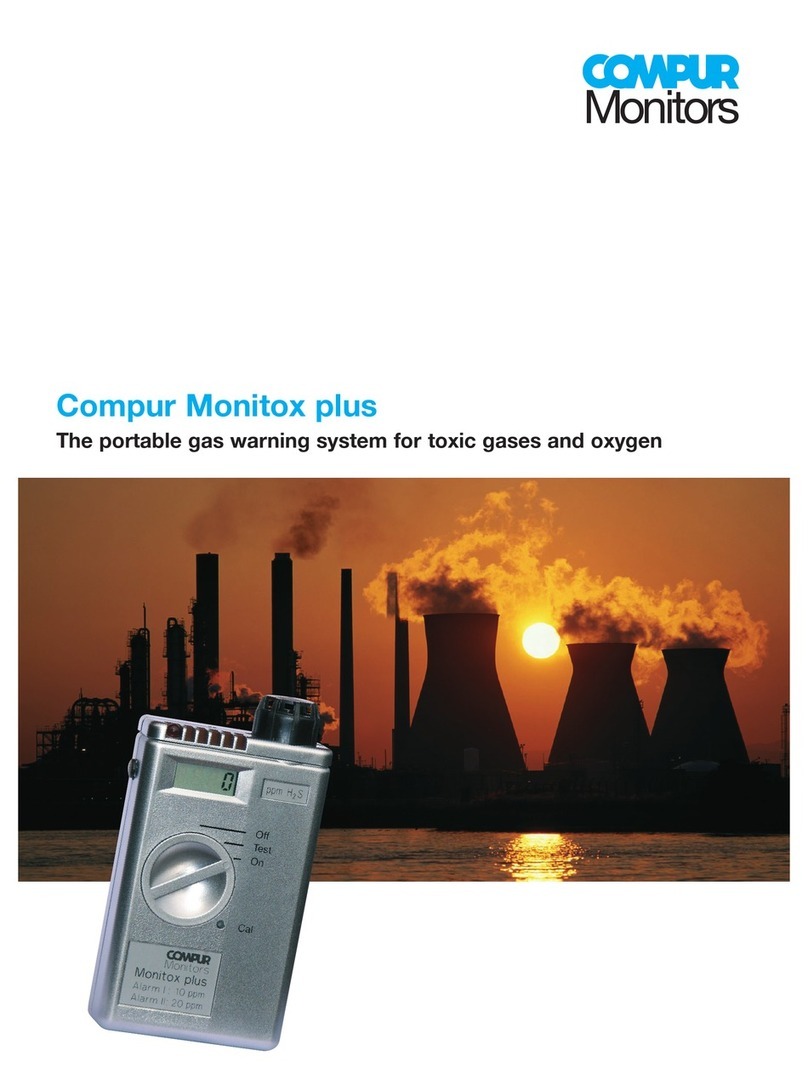
Compur
Compur Monitox plus brochure
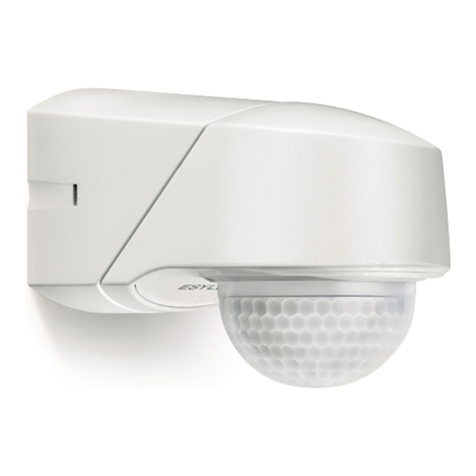
ESYLUX
ESYLUX RC 130i quick start guide
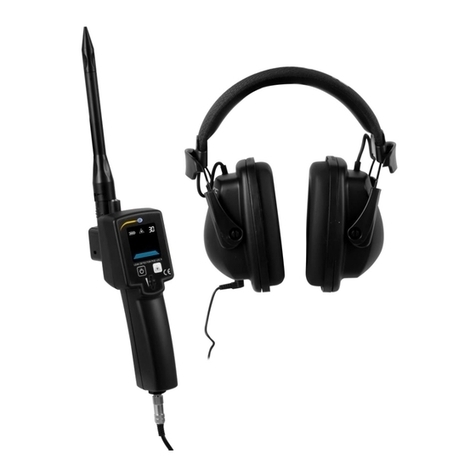
PCE Health and Fitness
PCE Health and Fitness PCE-LDC 8 user manual

Honeywell
Honeywell BW Solo user manual
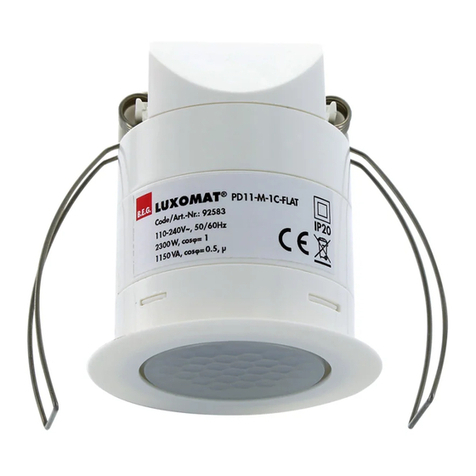
B.E.G.
B.E.G. Luxomat PD11-M-1C-FLAT Installation and operating instruction

Ultra-safe
Ultra-safe US-96760-120 User instruction manual
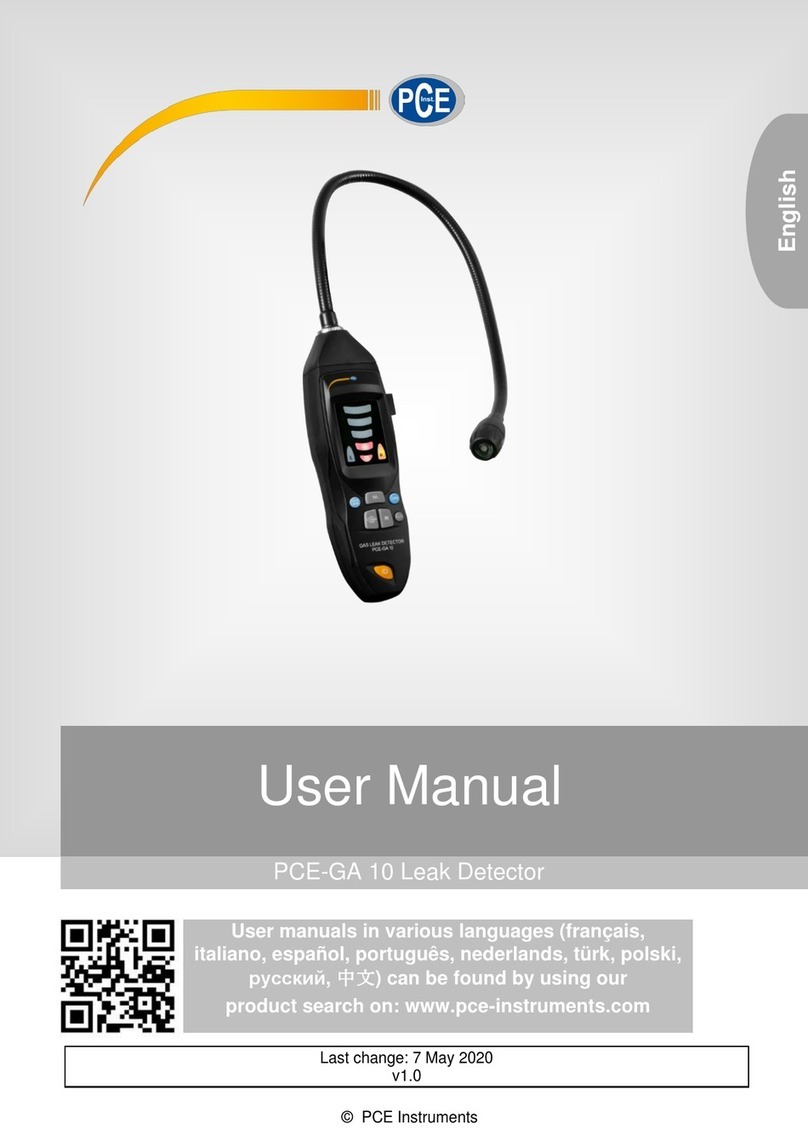
PCE Instruments
PCE Instruments PCE-GA 10 user manual
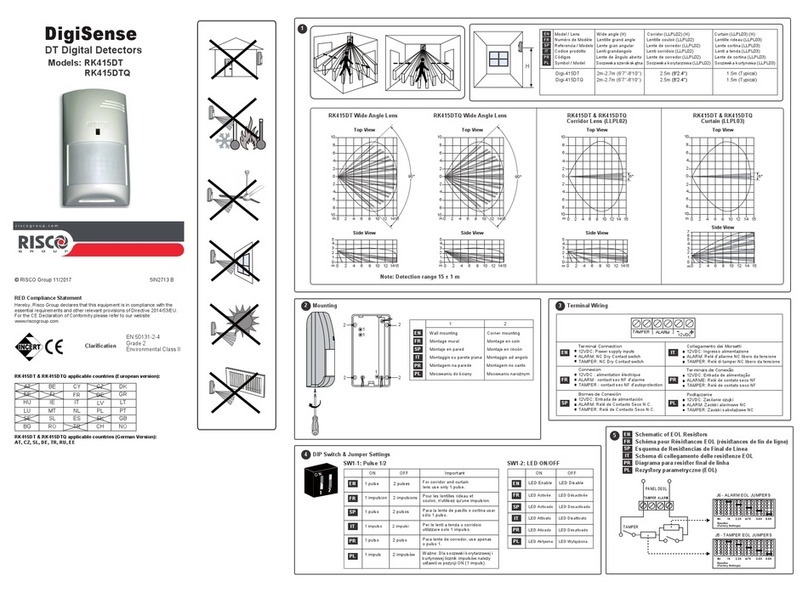
Digi-Sense
Digi-Sense RK415DT manual
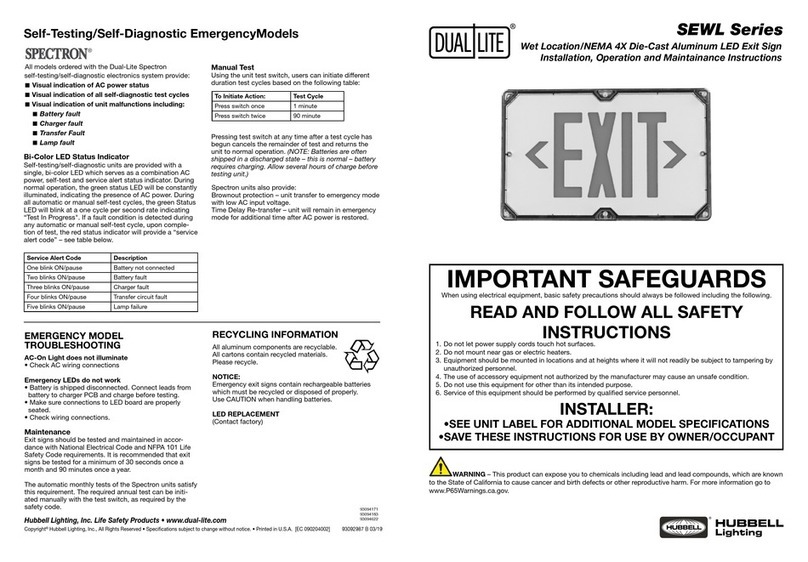
DualLite
DualLite SEWL Series Installation, Operation and Maintainance Instructions
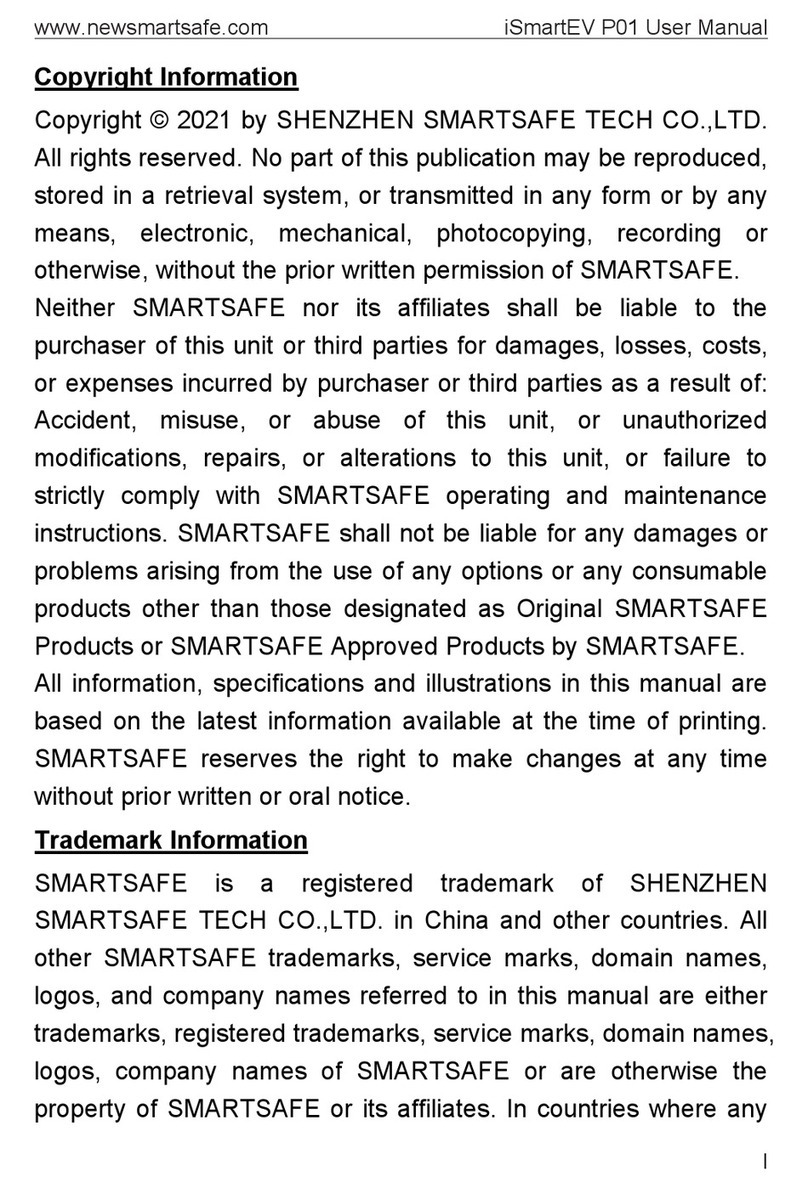
SmartSafe
SmartSafe iSmartE VP01 user manual
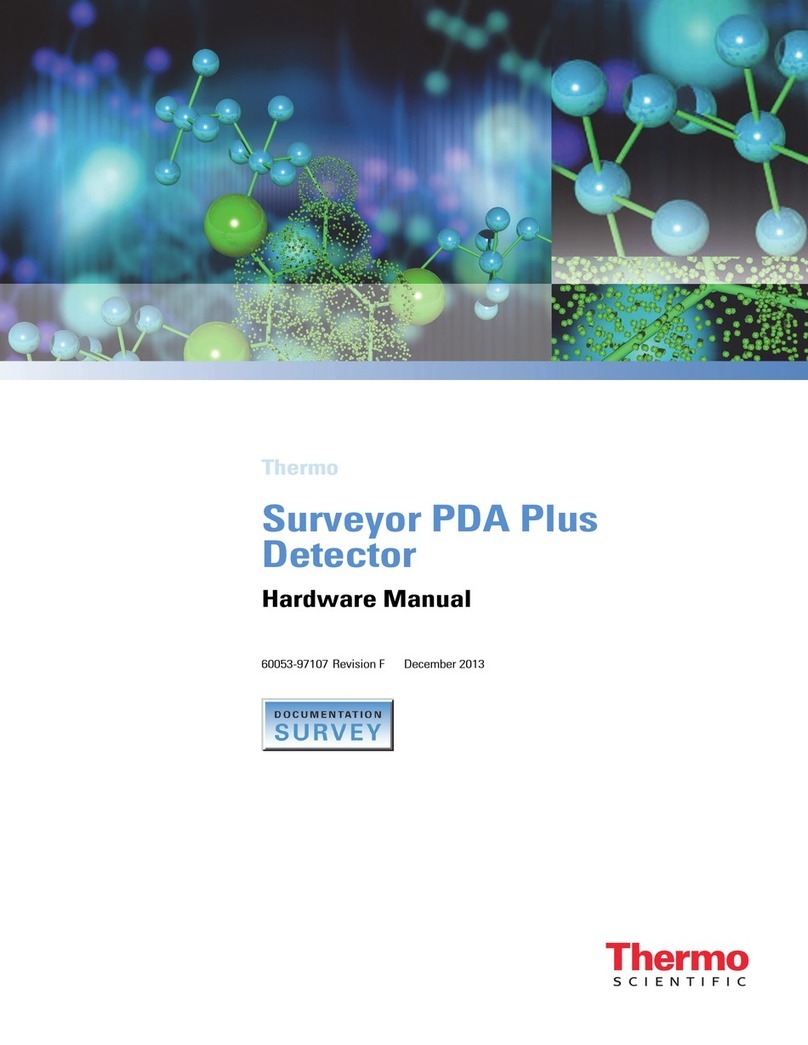
Thermo Scientific
Thermo Scientific Surveyor PDA Plus Hardware manual

TeleAlarm
TeleAlarm leesys HM-LES900 quick guide
